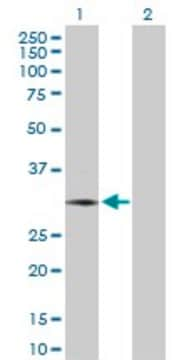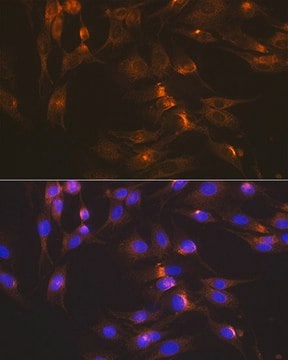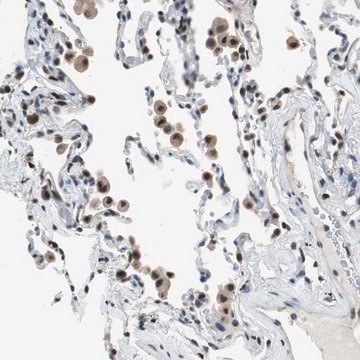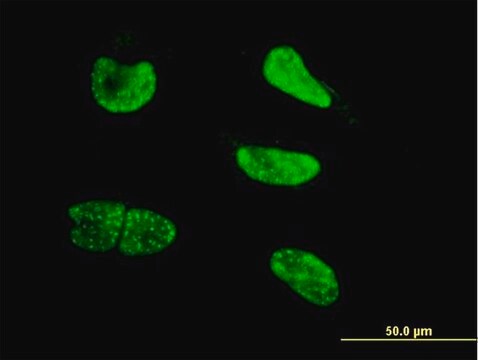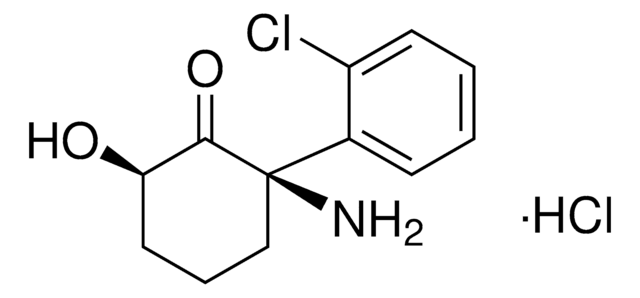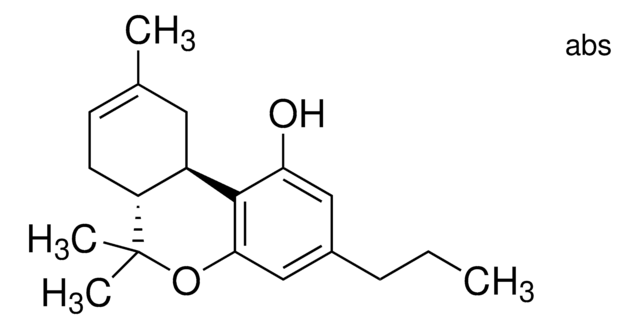AB5684
Anti-Neurogenin-3 Antibody, a.a. 80-93 of mouse Neurogenin-3.
Chemicon®, from rabbit
Synonym(s):
MATH4b
Sign Into View Organizational & Contract Pricing
Select a Size
All Photos(3)
Select a Size
Change View
About This Item
UNSPSC Code:
12352203
eCl@ss:
32160702
NACRES:
NA.41
Recommended Products
biological source
rabbit
Quality Level
antibody form
affinity purified immunoglobulin
antibody product type
primary antibodies
clone
polyclonal
purified by
affinity chromatography
species reactivity
human, rat, mouse
manufacturer/tradename
Chemicon®
technique(s)
immunohistochemistry: suitable
isotype
IgG
General description
Neurogenins are a family of bHLH transcription factors involved in specifying neuronal differentiation. They are related to Drosophila atonal. The neurogenins (ngns) make up one of these atonal-related gene families. In neural crest cells, the atonal-related neurogenin family is particularly important for the sensory lineage (Neurogenins Are Essential for the Formation of dorsal root ganglia), while the achaete-scute homologue ash1 (Mash1) is important for aspects of autonomic neurogenesis (Mash1 Is Essential for Noradrenergic Differentiation). Neurogenin-3 promotes pancreatic development.
Specificity
Recognizes Neurogenin 3 (MATH4b), a Helix-loop-helix class of transcription factor.
Immunogen
Epitope: a.a. 80-93 of mouse Neurogenin 3.
Synthetic peptide, amino acids 80-93 of mouse Neurogenin 3.
Application
Anti-Neurogenin-3 Antibody, a.a. 80-93 of mouse Neurogenin-3. detects level of Neurogenin-3 & has been published & validated for use in IH.
Immunohistochemistry: 1:200-1:1,000.
Immunocytochemistry: Cat. # AB5684 detects Neurogenin-3 in PC12 cells at 1:500 dilution.
Not recommended for Western blot
Immunocytochemistry: Cat. # AB5684 detects Neurogenin-3 in PC12 cells at 1:500 dilution.
Not recommended for Western blot
Research Category
Neuroscience
Neuroscience
Research Sub Category
Developmental Neuroscience
Neuronal & Glial Markers
Developmental Neuroscience
Neuronal & Glial Markers
Target description
~ 23 kDa
Physical form
Affinity purified immunoglobulin. Precipitated antibody in a solution of 50% saturated ammonium sulfate and PBS containing no preservatives.
Storage and Stability
Stable for 1 year at -20ºC from date of receipt.
Analysis Note
Control
Rat brain tissue.
Rat brain tissue.
Legal Information
CHEMICON is a registered trademark of Merck KGaA, Darmstadt, Germany
Disclaimer
Unless otherwise stated in our catalog or other company documentation accompanying the product(s), our products are intended for research use only and are not to be used for any other purpose, which includes but is not limited to, unauthorized commercial uses, in vitro diagnostic uses, ex vivo or in vivo therapeutic uses or any type of consumption or application to humans or animals.
Not finding the right product?
Try our Product Selector Tool.
Storage Class Code
12 - Non Combustible Liquids
WGK
WGK 2
Flash Point(F)
Not applicable
Flash Point(C)
Not applicable
Certificates of Analysis (COA)
Search for Certificates of Analysis (COA) by entering the products Lot/Batch Number. Lot and Batch Numbers can be found on a product’s label following the words ‘Lot’ or ‘Batch’.
Already Own This Product?
Find documentation for the products that you have recently purchased in the Document Library.
Tzu-Lei Kuo et al.
iScience, 26(1), 105881-105881 (2023-01-20)
ARID1A is a tumor suppressor gene mutated in 7-10% of pancreatic cancer patients. However, its function in pancreas development and endocrine regulation is unclear. We generated mice that lack Arid1a expression in the pancreas. Our results showed that deletion of
Expression in murine teratocarcinoma F9 cells of transcription factors involved in pancreas development.
O'Driscoll L, Gammell P, Clynes M.
Transplantation proceedings null
Guido Carpino et al.
Stem cells (Dayton, Ohio), 34(5), 1332-1342 (2016-02-07)
Peribiliary glands (PBGs) are niches in the biliary tree and containing heterogeneous endodermal stem/progenitors cells that can differentiate, in vitro and in vivo, toward pancreatic islets. The aim of this study was to evaluate, in experimental and human diabetes, proliferation
Ishant Khurana et al.
NPJ Regenerative medicine, 6(1), 7-7 (2021-02-14)
The role of DNA methylation in β-cell neogenesis is poorly understood. We report that during the process of induced cell reprogramming, methylation content of the Ngn3 and Sox11 genes are diminished. These findings emphasise DNA methylation is a barrier in
T Thatava et al.
Gene therapy, 18(3), 283-293 (2010-11-05)
Nuclear reprogramming of somatic tissue enables derivation of induced pluripotent stem (iPS) cells from an autologous, non-embryonic origin. The purpose of this study was to establish efficient protocols for lineage specification of human iPS cells into functional glucose-responsive, insulin-producing progeny.
Our team of scientists has experience in all areas of research including Life Science, Material Science, Chemical Synthesis, Chromatography, Analytical and many others.
Contact Technical Service